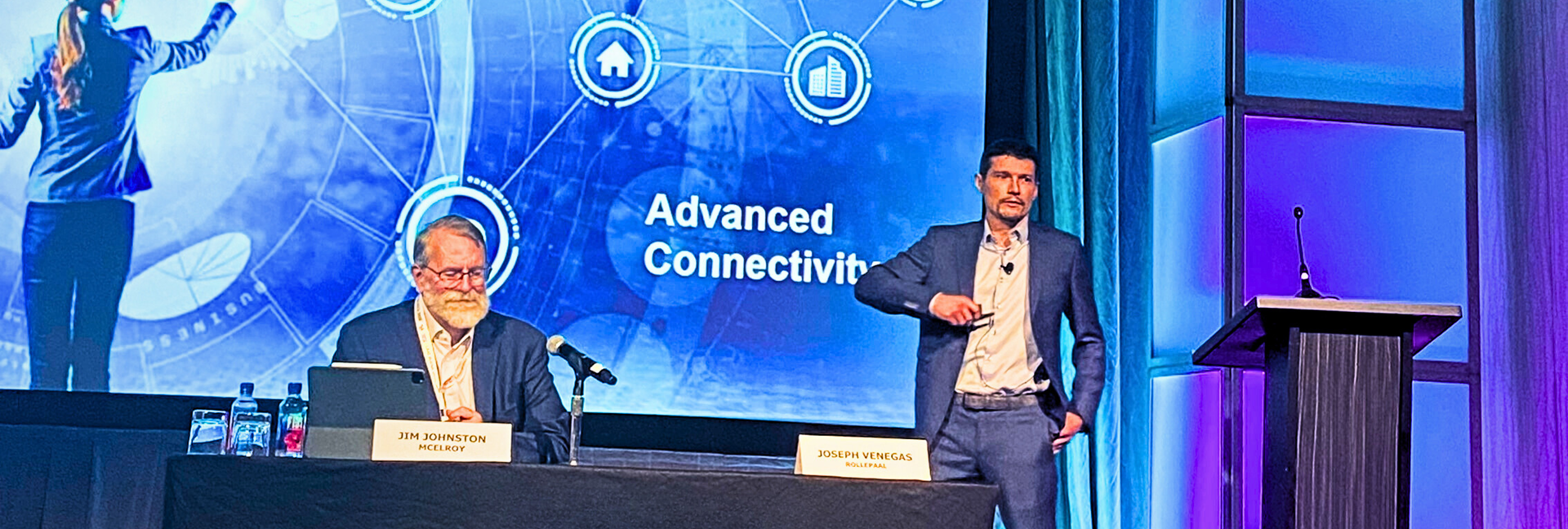
Advancing Sustainability with Digital Solutions
26 September 2023Download the white paper: ADVANCING SUSTAINABILITY WITH DIGITAL SOLUTIONS (Venegas, 2023)
Author: Joseph Melesio Venegas
Company: Rollepaal Pipe Extrusion Technology
Dedemsvaart, The Netherlands, 2023
SUMMARY
The necessity for action on climate change is a clear and pressing matter worldwide. The plastic pipe industry also has a clear role to play. First plastic pipes have a significantly lower environmental impact when compared to traditional materials. Structured walls, multi-layer, PVCO or oriented polyolefin pipes can further dramatically reduce the environmental impact of the industry. Digital solutions built around AI and machine learning offer a key to speeding up adoption of material saving technologies.
ABSTRACT
Digital tools can be a catalyst to accelerate the change we need to meet the goals of the Paris Climate Agreement (“The Paris Agreement”). Across all industries and all walks of life we need to speed up the pace of sustainable innovation. Fortunately, within the plastic pipe industry we have several forms of structured wall pipes as well as PVC-O which offer significant material savings and an enormous reduction in the environmental impact of our products. Digital tools can dramatically speed up the implementation of these more complex processes.
Digital tools offer three main benefits which can accelerate the adoption of new technologies. First, digital connectivity can make data available in real time anywhere in the world. Crucially it enables a user of new technology access to real-time support, the moment it’s needed. These speeds up adoption by reducing delays. Second, raw data can be turned into the information needed to optimize that process. This can come in the form of cloud data systems or AI analysis tools. Finally, digital tools can help companies replicate previous successes across new investments.
All three of these avenues use digital tools to turn data into information. Information that allows people and organizations to be agile and responsive, which is exactly what is needed to meet the goals set forth in the Paris Climate Agreement.
INTRODUCTION
The necessity is clear and Urgent
António Guterres, secretary General of the United Nations, said it best: “making peace with nature is the defining task of the 21st century.” He continued to call the whole planet to action: “Every country, city, financial institution and company should adopt plans for transitioning to net zero emissions by 2050… (and take) decisive action now.” (United Nations, 2021)
As Figure 1 indicates, we see climate change as the focus among five major, long-term world trends.
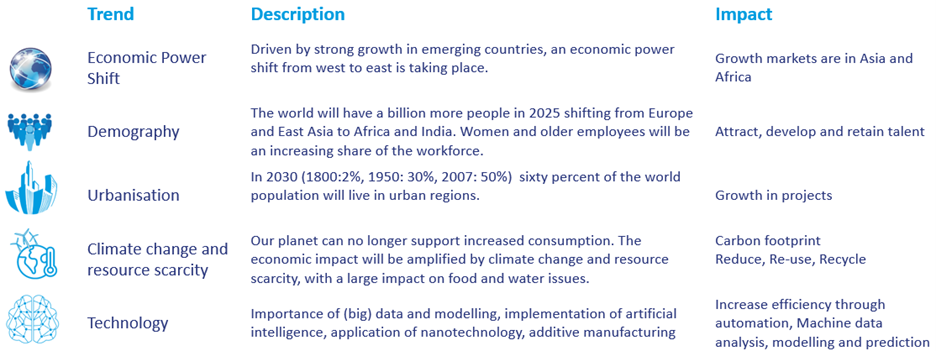
Figure 1: Five Global Trends, reproduced from Rollepaal Pipe Extrusion Technology
Our industry has seen structured wall pipes of all kinds and PVCO has significant potential weight savings. For example, we’ve seen PVCO reduce the meter weight of a pressure pipe by 60%. Any technology that has a significant material reduction also has a significant reduction in environmental impact.
Whether structured wall pipe or PVCO, material reduction technologies do not come for free. They per definition increase the complexity of production, in addition to requiring a financial investment. Therefore, if we want to speed up adoption of these types of technologies, we must look for ways to lower these barriers. In 2022 Mckinsey pointed to Applied Artificial Intelligence and Advanced Connectivity as being two of the top digital technology trends (Chui, et al., 2022). The combination of these technologies can create digital tools, which have been shown to speed up innovation. It is time to take advantage of these new tools to accelerate a sustainable transformation of our industry.
DISCUSSION
Step 1- Connectivity & Instant Support
Connectivity is the first step, and the most crucial, when it comes to the implementation of digital tools. There are three key factors:
- Robust connection
- Real-time data
- Remote Support
A robust connection is key because as people venture into the world of digital tools, they need to feel that they are using something reliable. If the connection is not always present, or the data is not always available, people will quickly revert to earlier ways of working. Part of a robust system is a simple system. The more links in the chain the more potential for failure. Start small and build out until you have real-time data access and remote support. Use known systems. Do not try to reinvent the wheel. We are extrusion companies and plastic producers not IT wizards. We need robust tools to use them; we do not need to invent them.
Real-time data is another critical milestone when implementing a system. Of course, you can start smaller and build up to this, but this element unlocks all kinds of possibilities, with remote support being the most important. Once data is available, you can then examine use cases for the data. Do you want to store it and automate reporting? Do you want to compare production across facilities? Do you want to feed data to your ERP system, manufacturing management system, or power BI tools? The possibilities are endless, but it starts with having real-time data available.
Remote support is the first use case available to manufacturing companies and is especially valuable to the adopter of new technology. Once remote data is available, your supplier should be able to login to your system and support you in real-time. When you are starting with new technology this key to speeding up implementation.
As an example, all our lines and machines come standard with Rollepaal al Connect.
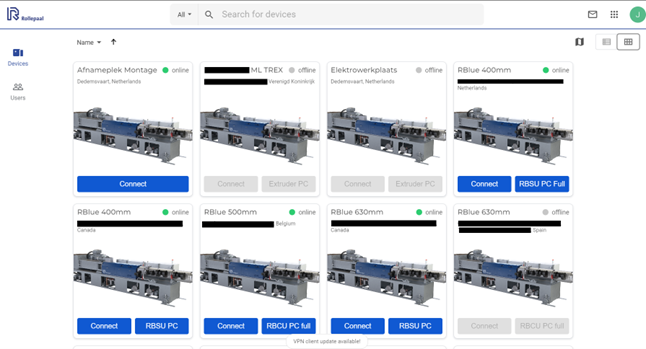
Figure 2: Rollepaal Connect Portal, April 2023
The system requires only an internet connection via Ethernet, Wi-Fi, or 4G to enable live connection to the machine via a secure VPN connection. If something goes wrong, you can log in and see exactly what the operator sees or review the log file from when the issue occurred. If you cannot resolve the issue yourself, a technician can login and trouble shoot the issue with you live.
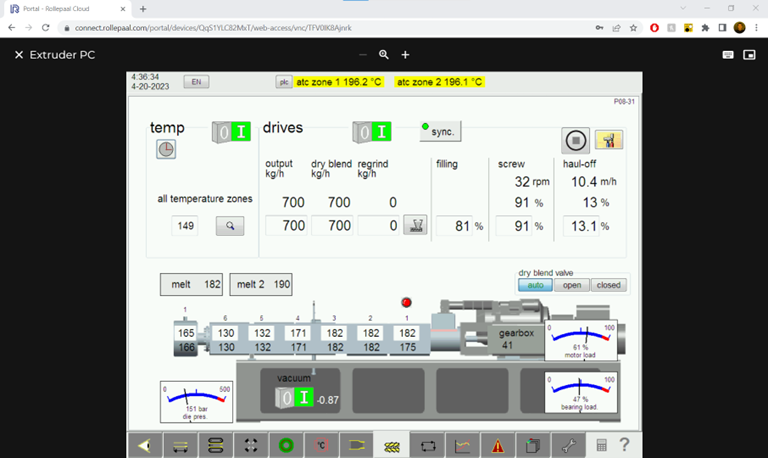
Figure 3: Live view of a running extruder via Rollepaal Connect, April 2023
Connectivity is the foundation of digital tools. It makes the data available which you will need for everything else you want to do in the future, and it unlocks remote support, which immediately helps you solve problems and get positive momentum in the use of digital tools.
Step 2 – Turn data into information
This step is very specific to the user and his needs. The key is to do your own evaluation and identify what is required:
- Identify a use case.
- Make it small.
- Test it and improve it.
Once all your data is available, one common pitfall is to get overwhelmed by possibilities and over analyze next steps. I call this paralysis by analysis. The reality is that all these digital tools are so new that there is no template for how to use them and make your company more profitable. Therefore, pick something to start with, something you know will be useful and start working. Experience is the best teacher.
Once you have decided what your use case will be, make it small! For example, our tool to review logfiles was limited to 24 hours of data and we wanted to review longer term trends. Therefore, we started by focusing on just that specific issue and built a simple database to store log files and a simple time series viewer.
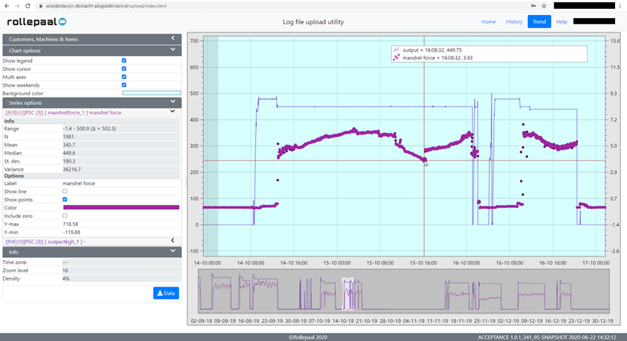
Figure 4: Screenshot of current Rollepaal cloud based trendviewer system
That was our very first project and still the most valuable. It is used daily to support customers and improve processing technology. We have since expanded it to be a cloud-based platform, which can be accessed anytime from anywhere in the world, but it started small and grew bit by bit.
Once you have something, quickly try it out and quickly adapt. Fast testing is key. Do not waste a year building something to perfection only to find out it is not exactly what you want. Just test, tweak, and test again. If you get into this cycle of testing and improving most people are surprised how quickly they end up with something useful. Having something useful is key to early success, which is key to building momentum.
Our Trendviewer is also a good example of how information can speed up the adoption of new structured wall or PVCO technology. The most common use case of this tool is processing support for a customer with a new line. Very often in the early stages of implementation operators run into issues because these new technopoles are more complex than standard extrusion. A new operator may get to a pipe size he has never run before and struggle. When this happens, we use long-term trend analysis to compare the current run to previous successful runs. We have live connection to the machine, live contact with the operator and this tool helps us do real-time analysis. Very simply, the more quickly a new technology is successful the faster it spreads!
Step 3 - Replicate Success
On a very basic level, once you have data available it is easier to review performance. It is easier to see how a line is performing. It is easier to see which lines are outperforming the rest. We need to use that information to maximize our investments and replicate the most profitable. It seems obvious, but very often real utilization and scrap rates are not known. Of course, you can make rough calculations with basic information, but many times, I see that basic information is not easily available. If you have all your production data, you can see the real output of each line for each pipe size. You can calculate real scrap rates and potential maximum production for each line. You can see if certain pipes are running less effectively than others. And all this analysis can be automated. With an update every day.
The key is visibility. See how your investments are really performing. See which are most profitable and replicate that success more quickly. It is good business, but it is also pushing the sustainability of our industry forward.
Step 4 - Modeling & AI
It’s also important to look at these tools from a different angle. How can we replicate processing success more quickly in new developments? How can we model and simulate innovations? Can the use of AI and machine learning assist us?
To be successful you need to start with a model. Essentially a model takes all your historical knowledge and understanding and puts it in one place. It can be as simple as modeling a single critical parameter or a complex interaction of processes. Essentially, it requires you to look at all the data available and understand on a basic level what is occurring. Again, start small and let it grow bit by bit.
We have a model which predicts several aspects of our PVCO production line. One aspect it predicts is pulling force. As a customer, we identified a high variation in the actual pulling force versus what we predicted. We were able to identify a long-term trend where the daily temperature cycle would sometimes affect the pulling force in PVCO production. Using our PVCO model we were then able to simulate different control strategies and their probably effectiveness in compensating for ambient environment changes. In the end, we now have automated control in all our lines, which minimizes this fluctuation by more than 70%. We are now looking to take the next step and see if we can use AI to identify other trends which we might not be aware of.
Just last year a paper was published, “Gradient Boosting Regression Trees for Nonlinear Delay Identification in a Polymer Extrusion Process”. While that paper can be cumbersome reading if you are not familiar with AI tools, it can be easily summarized: AI tools do a better job than standard modeling at predicting short-term extrusion trends. For example, if you want to know where your melt temperature will be in a half hour, AI will predict that better than standard modeling. Essentially, what that tells you is that AI can detect patterns which we don’t understand.
As an industry, we are in the infancy of using this technology to identify trends which might normally go unnoticed. One application area which has been tried is visual inspection.
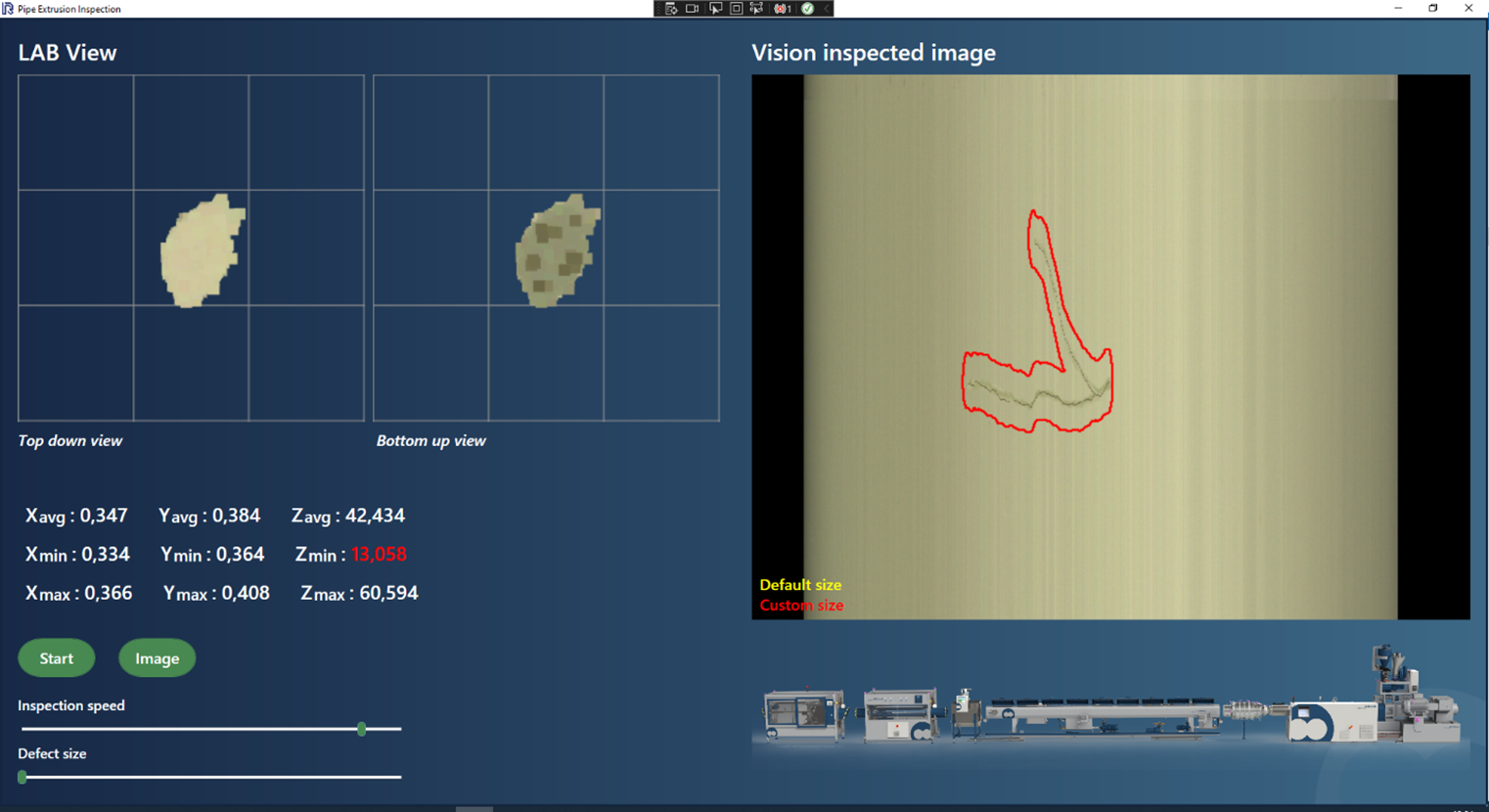
Figure 5: Rollepaal visual inspection environment
Visual inspection is an excellent application area for machine learning and AI because no two production pipes look the same, and no two visual defects are identical. Pipes come in different colors and depending on the environment will have different contaminants on the surface. Therefore, the ability to train a system on what is potentially defective pipe vs what is just normal visual appearance, means that AI and machine learning can create a much more sophisticated and accurate visual inspection system that is tailor made for your plant and your production. Furthermore, similar algorithms can look for trends in the types of images seen. What value might that deliver? Growing grease deposits on the surface of the pipe might warn of a haul off failure. A subtle change in the pipe color over time might point to unintended changes to the material formulation or performance. The possibilities are almost endless.
CONCLUSIONS
There are various types of material savings technologies in the pipe industry; multi-layer, structured wall or PVCO. All of them offer significant material savings and therefore a significant reduction in the environmental impact of pipes. However, any technology which saves material is also inherently more complex than traditional extrusion.
Digital tools offer us the opportunity to reduce the complexity of those systems through automation and modeling. Digital connectivity tools also make production data available live anywhere in the world. These speeds up the adoption of new technologies by opening the door for live support from anywhere in the world to the shop floor. Finally, once that data is available, we can more easily analyze and compare results. We can replicate both technical and business successes more quickly. We can look to AI and machine learning to find trends and optimize our processes in ways invisible to us currently.
The push to accelerate sustainable transformation is growing daily. We need to look for ways to become more agile and move more quickly. One way is by leveraging digital tools with those specific goals in mind; move more quickly and become more sustainable.
REFERENCES
"The Paris Agreement." United Nations Framework Convention on Climate Change, 31 Oct. 2022, Retrieved Sep 18, 2023 from parisagreement_publication.pdf (unfccc.int)
Accelerating sustainability through the accelerated adoption of Technology (Venegas, 2021) Retrieved 21 Sep. 2023, from: https://www.rollepaal.com/knowledge/accelerating-sustainability-through-the-accelerated-adoption-of-technology-venegas-2021/
Chui, M., Roberts, R. and Yee, L. (2022) McKinsey Technology Trends Outlook 2022, McKinsey & Company. McKinsey & Company. Retrieved April 20, 2023 from https://www.mckinsey.com/capabilities/mckinsey-digital/our-insights/the-top-trends-in-tech
Hartner, R. et al. (2022) “Gradient boosting regression trees for nonlinear delay identification in a polymer extrusion process,” 2022 IEEE 21st international Conference on Sciences and Techniques of Automatic Control and Computer Engineering (STA) [Preprint]. Retrieved Sep 18, 2023, from Gradient Boosting Regression Trees for Nonlinear Delay Identification in a Polymer Extrusion Process | IEEE Conference Publication | IEEE Xplore